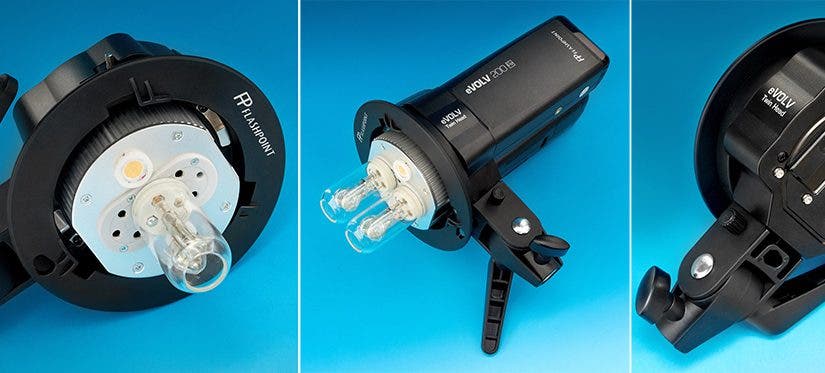

Part 1, was an eVOLV system overview. This Part 2 is a closer look at the eVOLV, with expanded info about the Twin Head adapter. I want to step back and take a moment to cover what the Flashpoint eVOLV 200 is ideally suited for. While it’s true it can be used for broad coverage, full-length photos, if you know your needs and they can’t be done with anything less than a fleet of high output strobes, I’m obviously not directing this article to you. High intensity, low ISO e-commerce and commercial work, for example; or live event, rapid fire, long days — while you can find a use for the eVOLV and make something good happen, neither of these examples are situations for which the eVOLV is an ideal candidate. If you need the maximum output, shortest recycle times, and size and weight are a secondary concern, the eVOLV isn’t the tool for the job. However, for editorial portraiture & fashion, evocative conceptual work in a real location… with the advent of cameras better suited to high ISO performance, and a general shift toward “organic” lighting, where strobes aren’t used so much to dominate available light as they are used to massage it, this is where the eVOLV is ideal. The focus in such an approach is not in building out an idealized lighting environment, sealing off the subject from the outside world. Instead it’s about embracing an approach that invites spontaneity and chance, that puts gear and the process of “making a photo” secondary to things like relating to the subject in a personal way, dropping the grip truck and tightening the crew, and going to places not previously considered appropriate for photography because of space or timing restrictions. A hybrid of reportage, working in a reactive mode, and at the same time allowing for a considered and crafted photo, where you grab your cameras and throw a couple eVOLVs in a shoulder bag. This is the vision of photography where the eVOLV not only shines, but is the current best tool possible for the job. A r ecent article at PDN , about a portrait session with Bruce Springsteen, is exactly this kind of approach — 11 minutes, 4 setups, a single Flashpoint Streaklight to augment ambient. I know of a handful of great photographers whose entire approach revolves around making the most of a scene, and only begrudgingly bringing strobe into the process as a last resort. Historically this has meant chasing a meandering and expensive path of finding the right gear (of the moment) and abandoning the previous year’s best tools in the process; rinse and repeat. I’ve seen many photographers go from too-heavy-to-be-fun Profoto 7b’s, to their expensive-but-anything-is-better-than-lead-acid lithium battery upgrades; and, more recently, settling on something like the Profoto B1, and still finding it is often overpowered and cumbersome for their needs. I’ve watched others try out an LED or speedlight workflow only to find each lacking at times because though they pack small, their output is often *just* a little too little. This is the space where the eVOLV finds its perfect fit. For anyone who loves working with ambient, bringing strobe in to either open shadows, add shape or dimension to the already established direction of light, the eVOLV is the current best tool for this workflow. Having only 5 months ago written an article proclaiming the Streaklight to be king of the hill in this space, I can tell you that since I’ve had my eVOLV’s — at first approaching them with reserved skepticism — my Streaklights have been moved to secondary, supporting roles in my shooting (often staying in the bag entirely). It is amazing to see how quickly things are progressing in lighting design and workflow, and leading the way are products like the eVOLV. Let’s get the downsides of the eVOLV out of the way — after all, no tool is without compromise: If you need absolute color stability from one output level to the next, you might find the eVOLVs fall outside your tolerances. Using a standard XRite color checker, blacking out color contamination from ambient light, I spent a day testing a mix of the R2 line of bare bulb strobes, and observed, as written in their spec sheets, they do drift over the power settings. The drift comes in at around 80K per stop, warmer (in general) as power is reduced. It’s a bit more complicated than this, as the curve isn’t exactly linear — from 1:1 to 1:4 power the color balance warms, then it cools off a touch 1:8 to 1:16, then warms again as power goes even lower. That is unfortunate, though not at all deal breaker for my workflow. You’ll see that once you move away from scrutinizing charts, claims fed by anxieties that these color shifts will have a huge impact on your work are — in my use and experience — overstated. 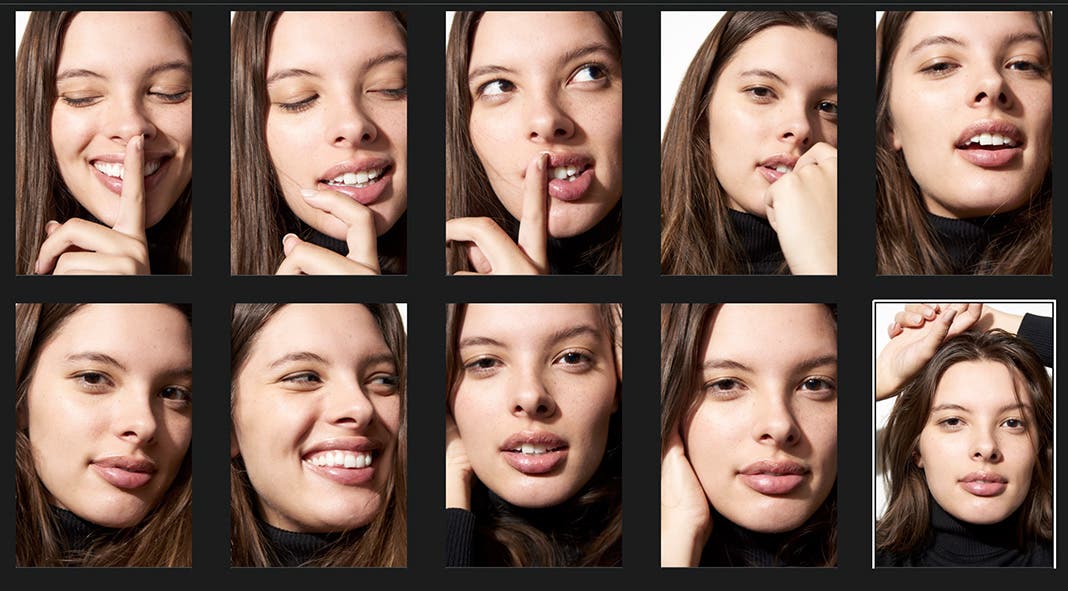 Meanwhile, observing that the eVOLV’s color temperature warms as power is lowered, I also discovered through testing that the eVOLV’s color stability, within a given power setting, is rock solid:
Meanwhile, observing that the eVOLV’s color temperature warms as power is lowered, I also discovered through testing that the eVOLV’s color stability, within a given power setting, is rock solid: 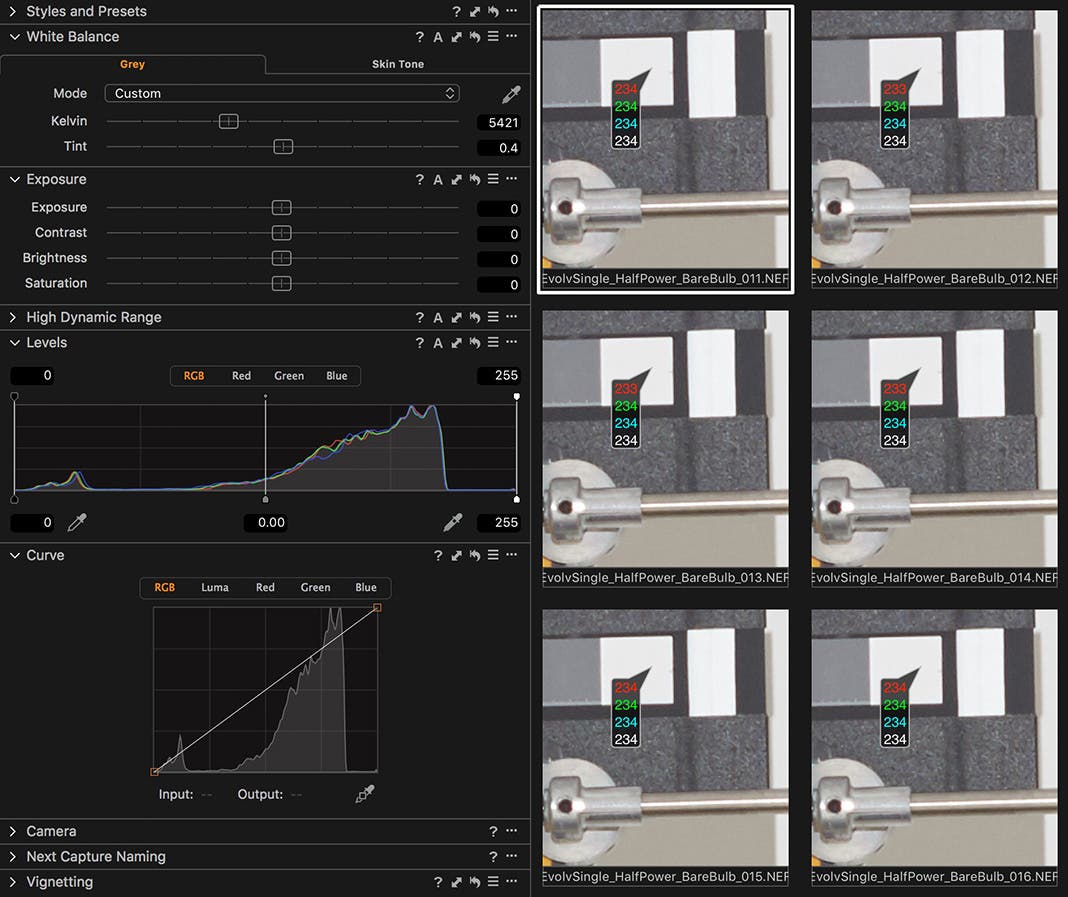 This is really the source of anxieties about color shifts — if the light shows wild swings frame-to-frame, it can be a big headache. Luckily the R2 lights don’t show that, and the eVOLV is no exception. In practice, I’ve found that the fill light represents a somewhat small percentage of the exposure in my frames. Because it is generally moved further from the subject, the power of the light is often close to the power of the key, and it is distance that creates the reduced output of the fill (as opposed to running the lights at widely different power levels). As a consequence, both key and fill are around the same power setting, and, because the margin in power setting between the two sources is narrow, it’s likely that any shift in color between the two light sources is narrow — about 100-200K. For my purposes, this isn’t a problem, especially given that frame-to-frame stability on the eVOLV appears to be amazing. I have not had the opportunity to test each of my lights, but across several jobs shooting with a mix of eVOLV & Xplor, I haven’t seen any notable issues. Another potential gripe is the dim screen of the eVOLV. With good, direct line of sight and in a low light environment, it seems fine, but at even modest angles it can be hard to see. I’ve had moments, in studio, where I thought the light wasn’t powered on because from where I stood I couldn’t see the text on the screen. Again, not a deal breaker, but for sure presents room for improvement whenever the 2.0 version is released. The umbrella bracket and mount gets a “in a pinch, it’s fine” from me. I love that it’s included in the base kit, and enjoy using it when I’m just using the eVOLV and either an umbrella, or the small reflector I’ve suggested , sitting directly on top of a stand. However, it can present a situation where you’ll need to adjust the mount and the angle of the light to keep it from loosening as the light is raised and boomed out on an arm. A better pin and locking mechanism, or a design which doesn’t rely on a simple screw would be a welcome improvement in the future. Lastly, the eVOLV, like all of the battery driven lights in the Flashpoint R2 family, offers HSS — High Speed Sync — as a tool to freeze motion. If used for multiple frames in rapid succession, thermal protect kicks in, and the light needs to recover for a few minutes before it can be used again. There are strategies to work around this, but this is an instance where being aware of the problem affords you the chance to sidestep it with a change in workflow or pace. The eVOLV promises up to 50 HSS frames with the bare bulb before thermal protect kicks in, a mere 20 with the fresnel head.
This is really the source of anxieties about color shifts — if the light shows wild swings frame-to-frame, it can be a big headache. Luckily the R2 lights don’t show that, and the eVOLV is no exception. In practice, I’ve found that the fill light represents a somewhat small percentage of the exposure in my frames. Because it is generally moved further from the subject, the power of the light is often close to the power of the key, and it is distance that creates the reduced output of the fill (as opposed to running the lights at widely different power levels). As a consequence, both key and fill are around the same power setting, and, because the margin in power setting between the two sources is narrow, it’s likely that any shift in color between the two light sources is narrow — about 100-200K. For my purposes, this isn’t a problem, especially given that frame-to-frame stability on the eVOLV appears to be amazing. I have not had the opportunity to test each of my lights, but across several jobs shooting with a mix of eVOLV & Xplor, I haven’t seen any notable issues. Another potential gripe is the dim screen of the eVOLV. With good, direct line of sight and in a low light environment, it seems fine, but at even modest angles it can be hard to see. I’ve had moments, in studio, where I thought the light wasn’t powered on because from where I stood I couldn’t see the text on the screen. Again, not a deal breaker, but for sure presents room for improvement whenever the 2.0 version is released. The umbrella bracket and mount gets a “in a pinch, it’s fine” from me. I love that it’s included in the base kit, and enjoy using it when I’m just using the eVOLV and either an umbrella, or the small reflector I’ve suggested , sitting directly on top of a stand. However, it can present a situation where you’ll need to adjust the mount and the angle of the light to keep it from loosening as the light is raised and boomed out on an arm. A better pin and locking mechanism, or a design which doesn’t rely on a simple screw would be a welcome improvement in the future. Lastly, the eVOLV, like all of the battery driven lights in the Flashpoint R2 family, offers HSS — High Speed Sync — as a tool to freeze motion. If used for multiple frames in rapid succession, thermal protect kicks in, and the light needs to recover for a few minutes before it can be used again. There are strategies to work around this, but this is an instance where being aware of the problem affords you the chance to sidestep it with a change in workflow or pace. The eVOLV promises up to 50 HSS frames with the bare bulb before thermal protect kicks in, a mere 20 with the fresnel head.
Understanding the limitations and quirks of your gear is helpful, and an absolute necessity as a pro. However, obsessing over quirks makes for a poor approach when considering how the technical aspect of photography informs creative opportunities. Here, I look past a tool’s shortcomings, and instead ask myself what creative opportunities does this tool offer? This is an outlook that considers how each tool offers a chance to approach the problem of making a good photo in a different way. I mentioned some of the possibilities which the eVOLV offers in Part 1, and the one which is perhaps most exciting for me is the Twin Head adapter. If the appearance on the scene of the eVOLV had people scratching their heads, the follow up optional Twin Head bracket was really exciting. Photographers looking to travel with a compact, yet fairly powerful lighting kit had up to this point had two ideal options: a fairly light 400ws pack with two flash outlets and specialized smaller heads, such as the Elinchrom Quadra ; or a single monolight with a built-in battery, such as the Profoto B1 , or the flagship model from Flashpoint – the Xplor600 . To be fair, these are all solid options, and in my work experience I love using the Xplor, but the Twin eVOLV opens up possibilities that simply went unimagined by manufacturers who seemed content to tread familiar design paths. Not enough to simply run circles around speedlights, with the addition of the Twin Head , the eVOLV transforms into a single, surprisingly powerful monolight, complete with a decent LED modeling light. I say surprisingly because despite being lighter, and breaking down to a comparatively smaller footprint, two eVOLVs and the twin adapter actually recycle faster than the Xplor, and put out only 1/3rd a stop less light. 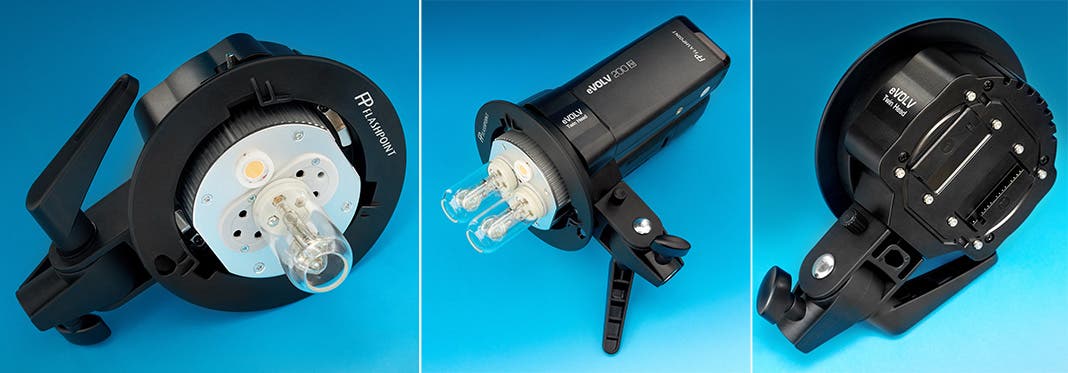
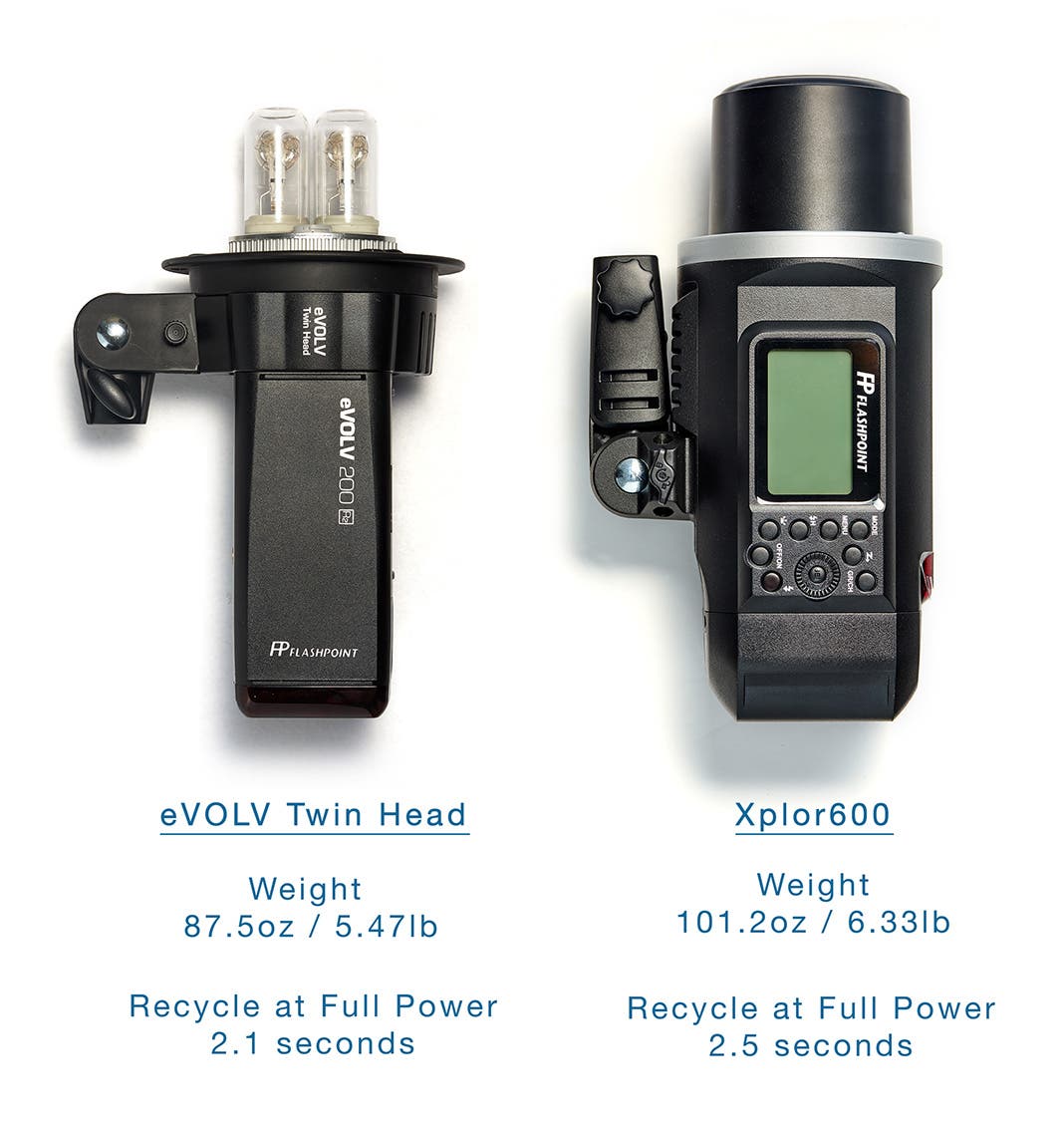 Used this way, the twin bracket offers two creative opportunities over a single eVOLV: 1) you get to light a subject with broader coverage and intensity to the tune of a full stop; 2) or you get to light the subject with the same intensity as a single eVOLV, while enjoying shorter recycle times or lower flash duration at the same exposure. In the case that you want to split the 400ws, you’re free to place each head respective to the other wherever you need or care to, without the limitations brought previously by cables running a pack. With the addition of a remote trigger capable of adjusting output power, the R2 at first, now the excellent R2Pro , the photographer’s creative freedom is further bolstered by being able to adjust and monitor ratios where they stand, without heading to a pack or back of the monolight. The R2Pro is currently compatible with Nikon, Canon, Sony, Fuji, Panasonic & Olympus. A brief note about the transmitter options — the R2 was a nice upgrade from what I’d been using before. The introduction of the R2Pro , on paper, left me a bit underwhelmed. I’d been getting along fine with the R2 and couldn’t conceive of how the change of button placement or a bigger screen would have a significant impact on my work. But once I used the R2Pro in a test trial, on a live gig, I was immediately converted. A principle guiding force in my work is in connecting with the people who are my creative team, and to my subjects, and to this end process, for me, is about keeping the friction of technical details as low as possible, allowing me to work undistracted. I like to think of this as “transparency” — I want to be able to look through my tools and instead bring my focus to the very real people and ideas I’m engaged with in the moment. Any improvement in this area is not only welcome, it often has a palpable impact on the outcome of a shoot. Each iteration of my workflow attempts to push two seemingly contradictory directions — lighting which is more varied, ambitious or polished; combined with lower setup times and increasingly friction-free workflow. I’m used to setup times and tweaks to light coming in at a healthy 25-45 minutes — on a recent job, using the eVOLV Twin setup, an Xplor and the R2Pro, I went from rolling in to location, to ready to shoot the first look in 9 minutes.
Used this way, the twin bracket offers two creative opportunities over a single eVOLV: 1) you get to light a subject with broader coverage and intensity to the tune of a full stop; 2) or you get to light the subject with the same intensity as a single eVOLV, while enjoying shorter recycle times or lower flash duration at the same exposure. In the case that you want to split the 400ws, you’re free to place each head respective to the other wherever you need or care to, without the limitations brought previously by cables running a pack. With the addition of a remote trigger capable of adjusting output power, the R2 at first, now the excellent R2Pro , the photographer’s creative freedom is further bolstered by being able to adjust and monitor ratios where they stand, without heading to a pack or back of the monolight. The R2Pro is currently compatible with Nikon, Canon, Sony, Fuji, Panasonic & Olympus. A brief note about the transmitter options — the R2 was a nice upgrade from what I’d been using before. The introduction of the R2Pro , on paper, left me a bit underwhelmed. I’d been getting along fine with the R2 and couldn’t conceive of how the change of button placement or a bigger screen would have a significant impact on my work. But once I used the R2Pro in a test trial, on a live gig, I was immediately converted. A principle guiding force in my work is in connecting with the people who are my creative team, and to my subjects, and to this end process, for me, is about keeping the friction of technical details as low as possible, allowing me to work undistracted. I like to think of this as “transparency” — I want to be able to look through my tools and instead bring my focus to the very real people and ideas I’m engaged with in the moment. Any improvement in this area is not only welcome, it often has a palpable impact on the outcome of a shoot. Each iteration of my workflow attempts to push two seemingly contradictory directions — lighting which is more varied, ambitious or polished; combined with lower setup times and increasingly friction-free workflow. I’m used to setup times and tweaks to light coming in at a healthy 25-45 minutes — on a recent job, using the eVOLV Twin setup, an Xplor and the R2Pro, I went from rolling in to location, to ready to shoot the first look in 9 minutes.
These are the creative opportunities that inform my choices about the three main eVOLV configurations — in the third part of this series I’ll put each in a real world context:
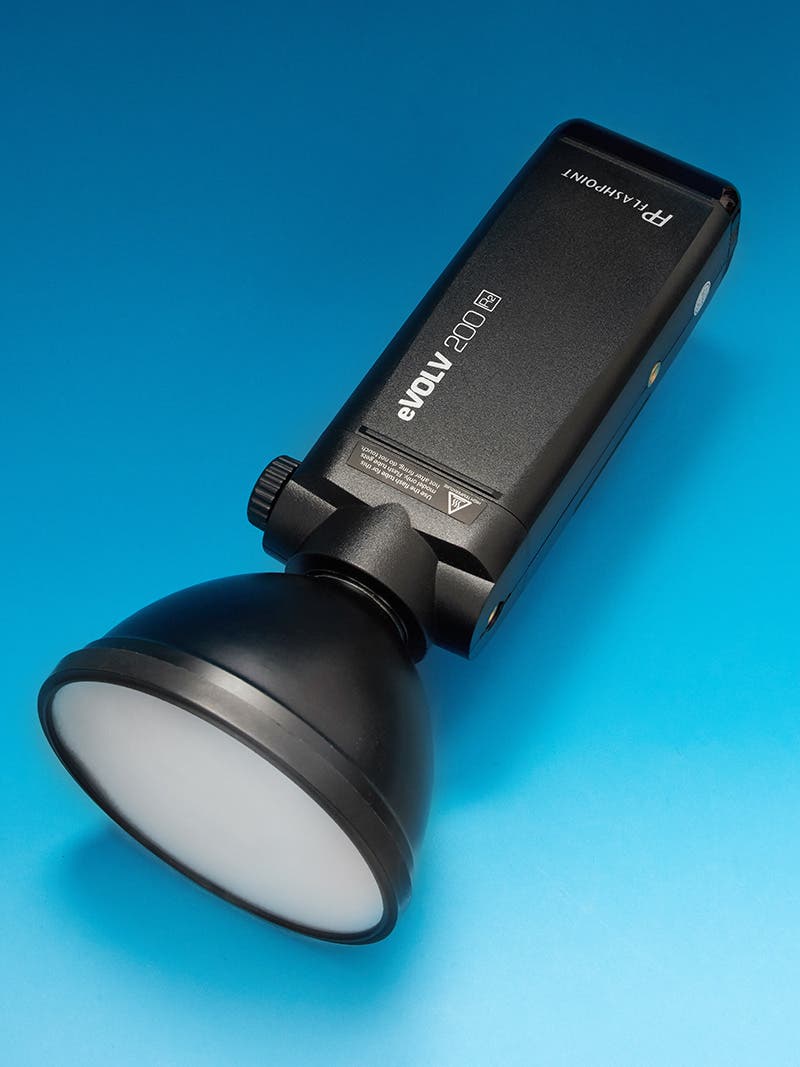
Using the bare bulb and reflector, you get high output with clean shadows. Adding a second bare bulb unit in a large, soft source, as key & fill counterparts. I have two eVOLVs and often work with them in this configuration.
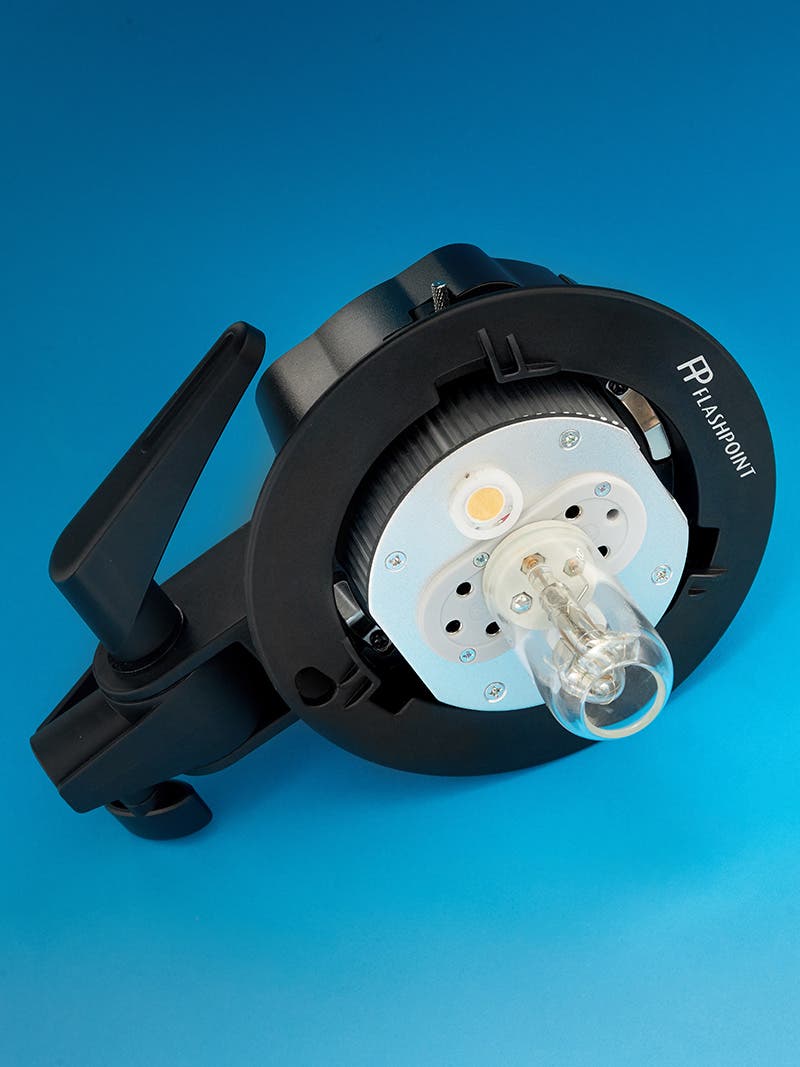
This works as above, for key and fill, but with the Twin Head bracket, it’s even better suited for attaching larger Bowens mount modifiers, like the classic beauty dish from Glow for your key light. Over time you’ll come to understand what each modifier does, and gravitate to one or a few in establishing your distinct style. In addition to a better mount, the bulb for the twin hate been moved forward, and sits ahead of the modifier base, allowing for a more even distribution of light inside large modifiers. While it’s obvious the twin bracket represents a significant upgrade from working with the screw-on umbrella mounts packed with the eVOLV, it’s also superior to t he Bowens S bracke t that we’d come to rely on with the Streaklights . In addition to being a better umbrella mount, it excels because of its combined packing size, build quality and the added bonus of the twin bracket being a reasonably good modeling light.
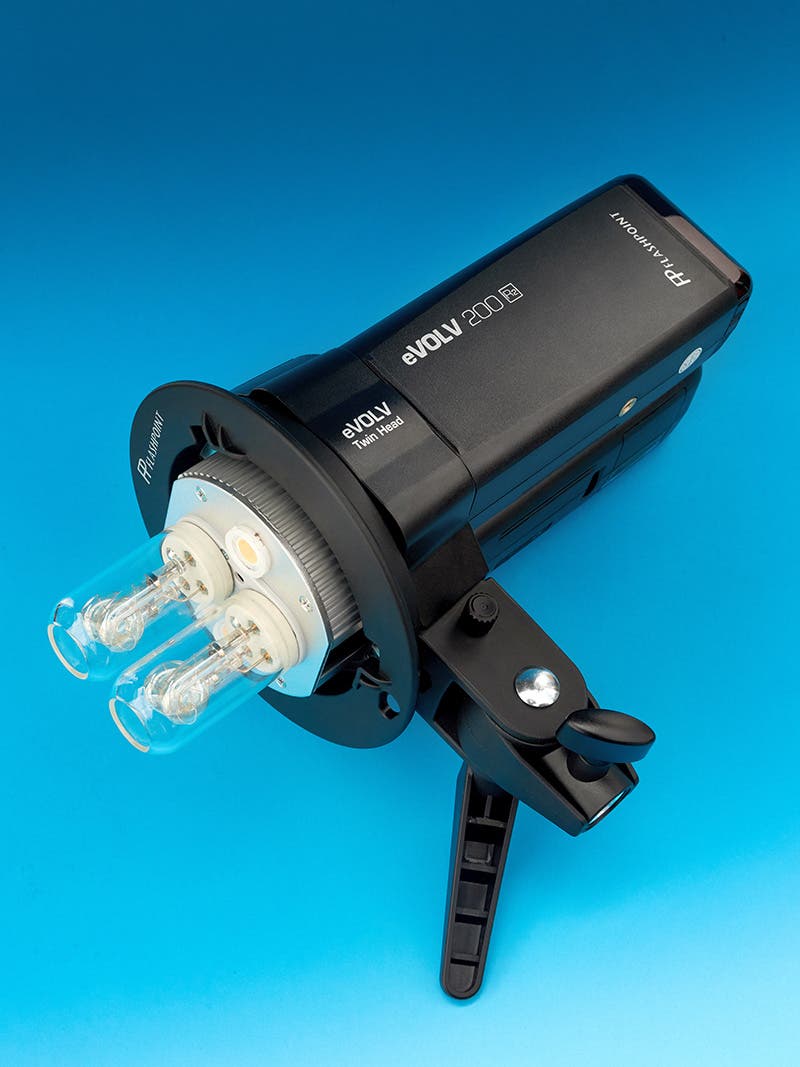 This is fantastic for filling a large source, and great for reducing recycle times or flash duration at an exposure level that is the same as a single eVOLV. Note that there is a very subtle secondary shadow due to this design, so depending on your modifier, and how much your scrutinize your photos for this kind of detail, it might be wise to think of this configuration as best used inside a reflective and diffused modifier such as a Photek Softlighter or this umbrella with its diffusion . I use this setup all day in a large umbrella as fill for ambient, at very low power settings around 1/32nd and below — the coverage, recycle time and flash duration are the perfect counterpart to ambient sun, offering opportunities to create richly detailed images of movement and action.
This is fantastic for filling a large source, and great for reducing recycle times or flash duration at an exposure level that is the same as a single eVOLV. Note that there is a very subtle secondary shadow due to this design, so depending on your modifier, and how much your scrutinize your photos for this kind of detail, it might be wise to think of this configuration as best used inside a reflective and diffused modifier such as a Photek Softlighter or this umbrella with its diffusion . I use this setup all day in a large umbrella as fill for ambient, at very low power settings around 1/32nd and below — the coverage, recycle time and flash duration are the perfect counterpart to ambient sun, offering opportunities to create richly detailed images of movement and action. 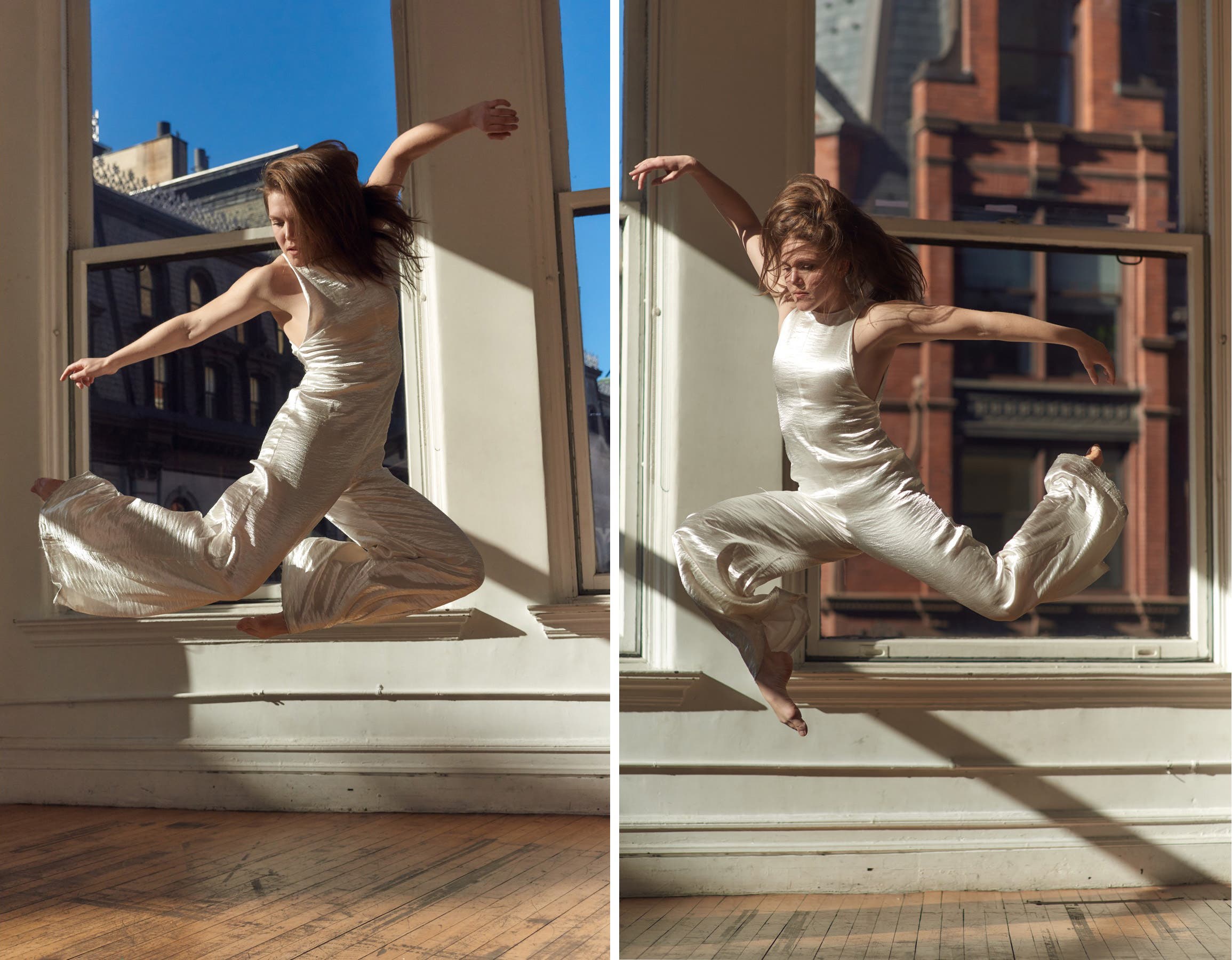
When the eVOLV first appeared, many people — myself included — groaned at the idea of sacrificing the output level we’d taken for granted with the Streaklights. Based on specs alone it looked as if, in order to give up the cables and clamps of the Streaklights, we were losing too much of our max output. In practice, the eVOLV is only 2/3rds a stop behind a Streaklight. And so it goes with the Xplor vs. the eVOLV in the twin bracket — it is surprisingly only 1/3rd of a stop behind the flagship Xplor, and at that recycles just a touch faster. It also weighs significantly less: the Xplor is 101.20oz (6.33lb) and the eVOLV, twin adapter, two bulb setup is 87.50oz (5.47lb). Worried that the eVOLV was a regression in output, what we’ve instead observed is that it packs quite a punch.